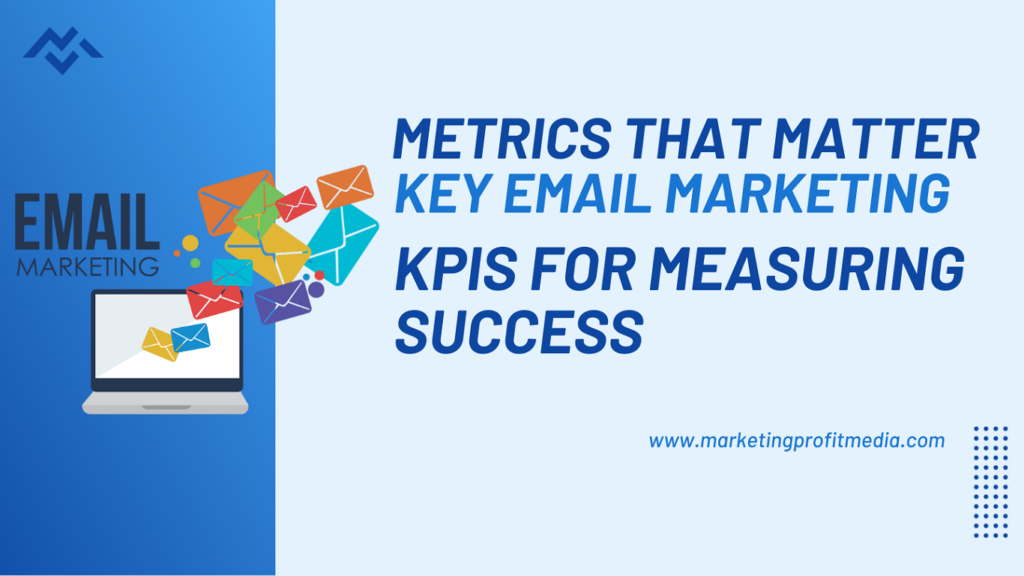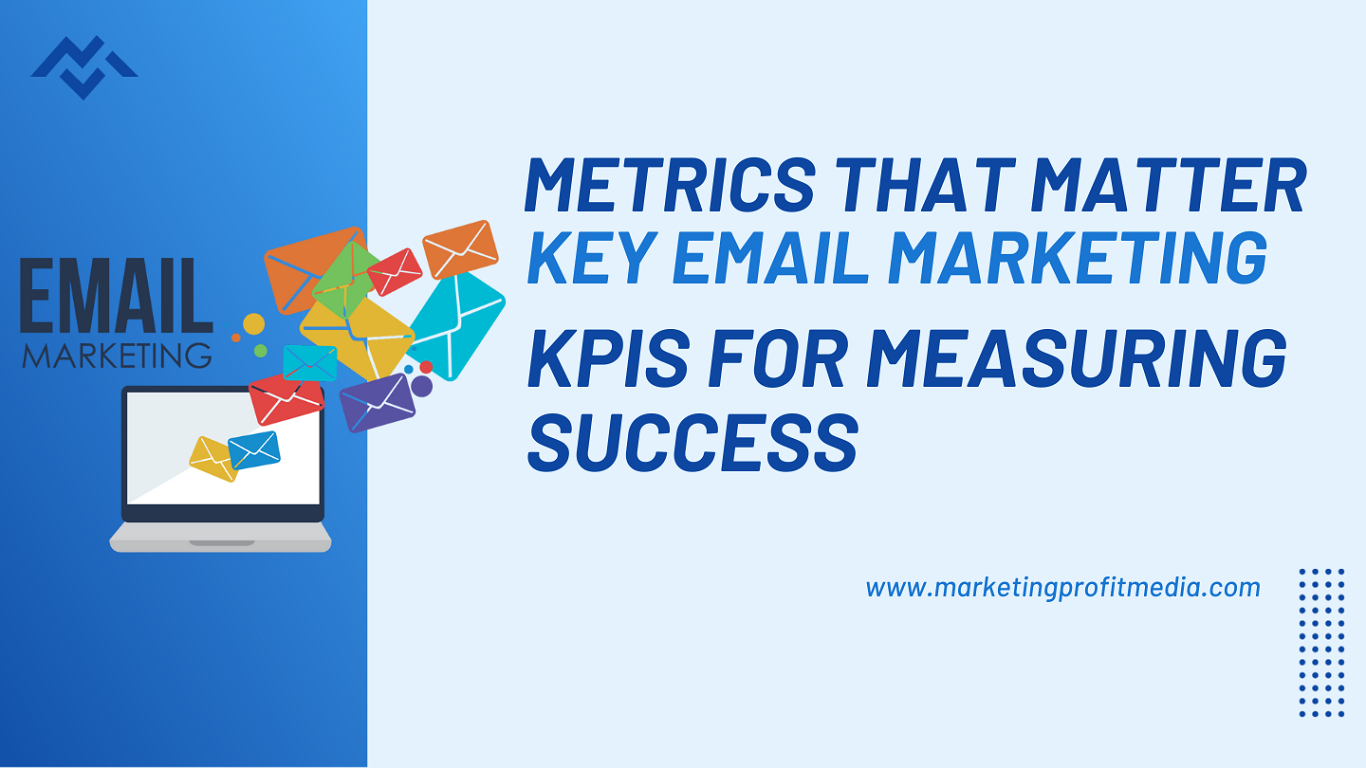Email marketing remains a powerful tool for businesses to connect with their audience and drive conversions. To ensure your email campaigns are effective, it’s crucial to measure the right key performance indicators (KPIs). In this article, we will delve into the essential email marketing KPIs that matter, helping you gauge the success of your campaigns. Join us as we delve into the world of email marketing KPIs and discover the insights they offer to help you thrive in the ever-evolving digital terrain.
My Best Recommended & Proven Way to Make $100 Daily – Watch THIS FREE Training to START >>

1. Understanding Email Marketing
Email marketing is a dynamic strategy that involves sending targeted emails to a list of subscribers. It’s a powerful tool for businesses to connect with their audience, nurture leads, and drive conversions. By crafting compelling content, personalizing messages, and analyzing key metrics, businesses can harness the full potential of email marketing to build strong customer relationships and achieve their marketing goals.
Understanding the importance of Email Marketing KPIs
Understanding the importance of Email Marketing KPIs is crucial. These metrics offer valuable insights, guiding data-driven decisions, and optimizing campaigns for maximum engagement and ROI.
2. Deliverability Metrics
Deliverability metrics are the gatekeepers of successful email marketing. They include open rates, click-through rates, bounce rates, and spam complaint rates. These metrics determine if your emails reach the intended inboxes and how well they resonate with your audience, influencing the overall effectiveness of your campaigns.
Open Rate
The open rate is a fundamental metric that tells you how many recipients opened your email. It’s a vital indicator of your email’s subject line and sender reputation.
Click-Through Rate (CTR)
CTR measures the percentage of recipients who clicked on one or more links contained within your email. It helps you evaluate the relevance of your content and call-to-action buttons.
Bounce Rate
Bounce rate indicates the number of emails that were not delivered to the recipient’s inbox. It’s essential to keep this rate low to maintain a good sender reputation.
Spam Complaint Rate
This metric tracks the number of recipients who marked your email as spam. A high spam complaint rate can harm your email deliverability.
3. Engagement Metrics
Engagement metrics gauge how well your audience interacts with your email content. These include conversion rates, email sharing and forwarding, and time spent reading. High engagement indicates content relevance and audience connection, key factors in achieving email marketing success and driving desired actions from recipients.
Conversion Rate
Conversion rate measures the percentage of email recipients who completed the desired action, such as making a purchase or signing up for a newsletter.
Email Sharing and Forwarding
When your recipients share or forward your emails, it signifies the quality and shareability of your content.
Time Spent Reading
Knowing how much time recipients spend reading your email can provide insights into the engagement level of your audience.
My Best Recommended & Proven Way to Make $100 Daily – Watch THIS FREE Training to START >>
4. List Growth Metrics
List growth metrics are vital for expanding your email reach. They encompass subscriber growth rates and unsubscribe rates. A growing list means access to a wider audience, while monitoring unsubscribes helps refine content and maintain list quality, ensuring your email marketing efforts remain effective and sustainable.
Subscriber Growth Rate
Subscriber growth rate indicates how quickly your email list is expanding. A healthy growth rate is essential for reaching new audiences.
Unsubscribe Rate
On the flip side, the unsubscribe rate shows how many subscribers are opting out of your emails. Monitoring this rate helps you refine your content and frequency.
5. Revenue Metrics
Revenue metrics are the bottom line of email marketing success. These metrics, including ROI (Return on Investment) and Average Revenue per Email (ARPE), assess the financial impact of your campaigns. They reveal the direct correlation between your email marketing efforts and the revenue generated, helping you measure and optimize your marketing strategies effectively.
ROI (Return on Investment)
ROI calculates the profitability of your email marketing campaigns by comparing the revenue generated to the costs involved.
Average Revenue per Email (ARPE)
ARPE measures how much revenue each email in your campaign generates on average. It helps you understand the financial impact of your emails.
Customer Retention Metrics
Customer retention metrics are the compass for long-term success. Churn rate and Customer Lifetime Value (CLV) are crucial in this regard. A low churn rate indicates customer loyalty, while CLV estimates the long-term value each customer brings, guiding email marketing strategies to nurture and retain valuable customer relationships.
Churn Rate
Churn rate represents the percentage of subscribers who stop engaging with your emails or unsubscribe. Reducing churn is critical for long-term success.
Customer Lifetime Value (CLV)
CLV estimates the total revenue a customer will generate throughout their relationship with your brand. It guides your email marketing strategy for retaining valuable customers.
6. Testing and Optimization Metrics
Testing and optimization metrics drive email marketing improvement. A/B testing results and email client/device analytics provide insights. A/B tests reveal what resonates best with your audience, while email client/device analytics help optimize email design for compatibility. These metrics empower continuous refinement of your campaigns for enhanced performance.
A/B Testing Results
A/B testing allows you to experiment with different email elements to find what resonates best with your audience.
Email Client and Device Analytics
Understanding which email clients and devices your recipients use can help you optimize your email design for better compatibility.
7. Compliance Metrics
Compliance metrics ensure ethical and legal email marketing. They include CAN-SPAM Compliance and GDPR Compliance. Adhering to these regulations is essential to protect user privacy, avoid legal repercussions, and maintain trust with subscribers. Compliance metrics serve as a foundation for responsible and effective email marketing practices.
CAN-SPAM Compliance
Complying with CAN-SPAM regulations is essential to avoid legal issues and maintain trust with your subscribers.
GDPR Compliance
For businesses targeting European audiences, GDPR compliance is necessary to protect user data and privacy.
My Best Recommended & Proven Way to Make $100 Daily – Watch THIS FREE Training to START >>
8. Success Story
A success story in email marketing showcases the tangible results achieved through effective strategies and careful metric analysis. It highlights how businesses, by leveraging key metrics and making data-driven decisions, have increased engagement, revenue, and customer retention. Success stories serve as inspiration and practical examples for marketers aiming for email marketing excellence.
Real-Life Email Marketer Success Stories
Real-life email marketer success stories illuminate the impact of effective email strategies. These narratives reveal how savvy marketers achieved remarkable results, inspiring others in the field.
Motivation to Keep Going
Motivation to keep going is the fuel for success. It’s the driving force that pushes individuals to overcome challenges and persist on their journey to achieve their goals.
Sharing strategies that worked
Sharing strategies that worked is the essence of knowledge sharing. It involves individuals passing on their successful tactics and experiences to inspire and assist others on similar paths.
Overcoming challenges
Overcoming challenges is the path to growth. It’s about-facing obstacles head-on, learning from setbacks, and emerging stronger and wiser on the journey to success.
Conclusion
Email marketing is a dynamic and effective strategy when executed with precision. By focusing on these key email marketing KPIs, you can track your progress, make data-driven decisions, and continually improve your campaigns. Real-life success stories and the motivation to persevere inspire us to push our limits. Sharing effective strategies and learning from others’ challenges enriches our collective knowledge. Email marketing, when fueled by data-driven insights and a commitment to continuous improvement, can lead to remarkable success. So, embrace these metrics, learn from your journey, and keep pushing forward in the world of email marketing.














